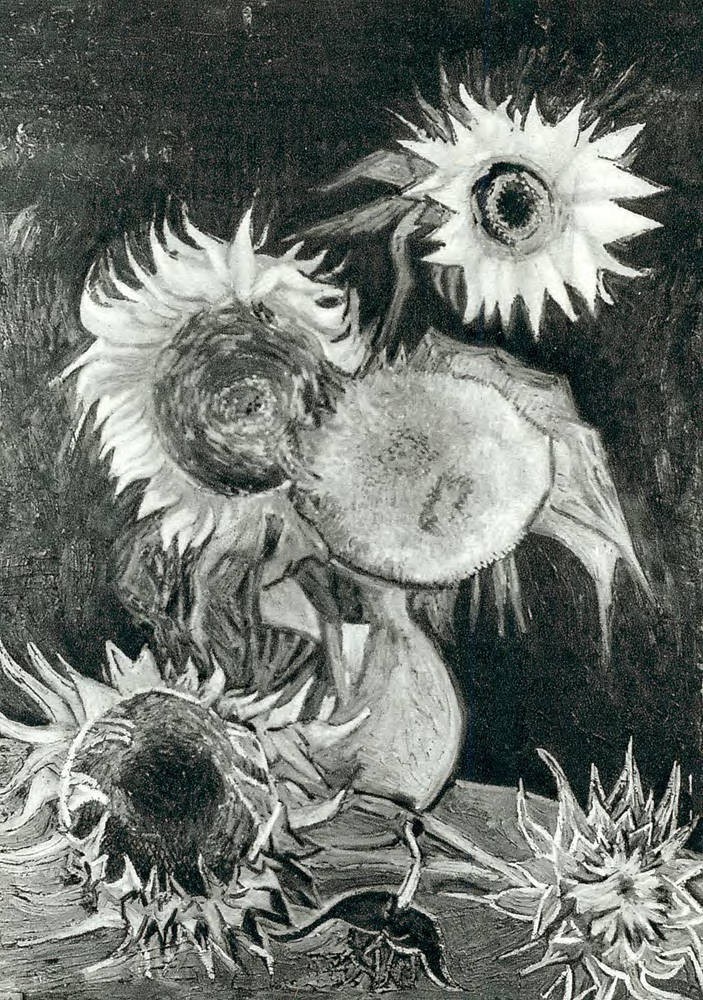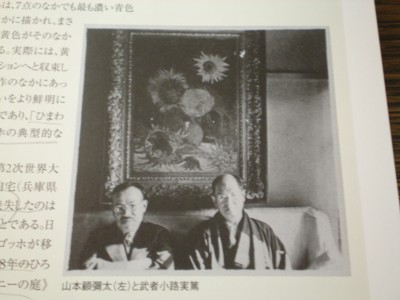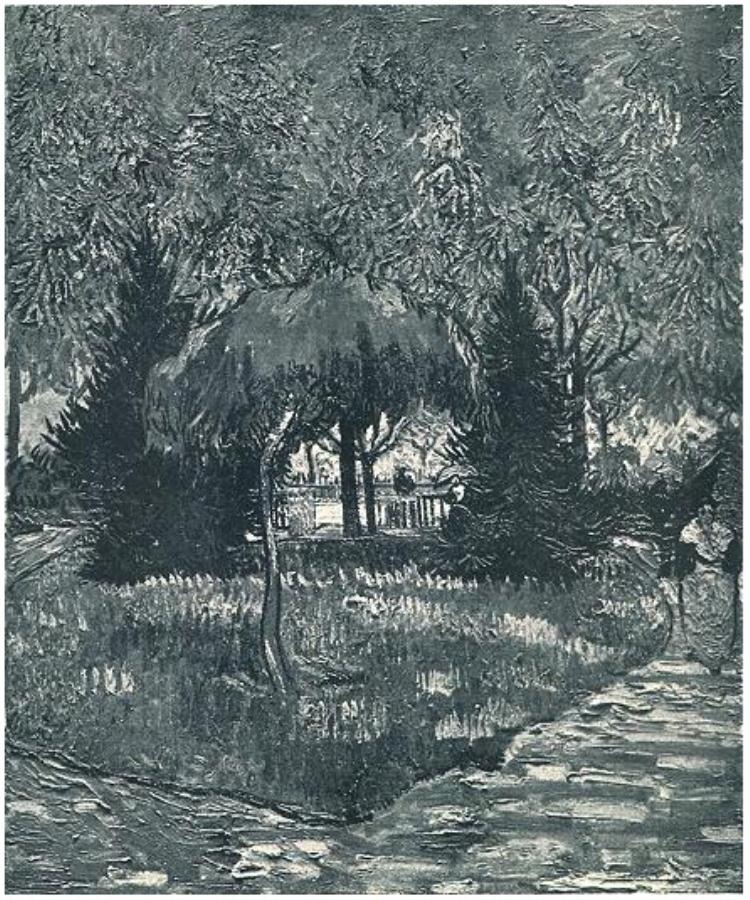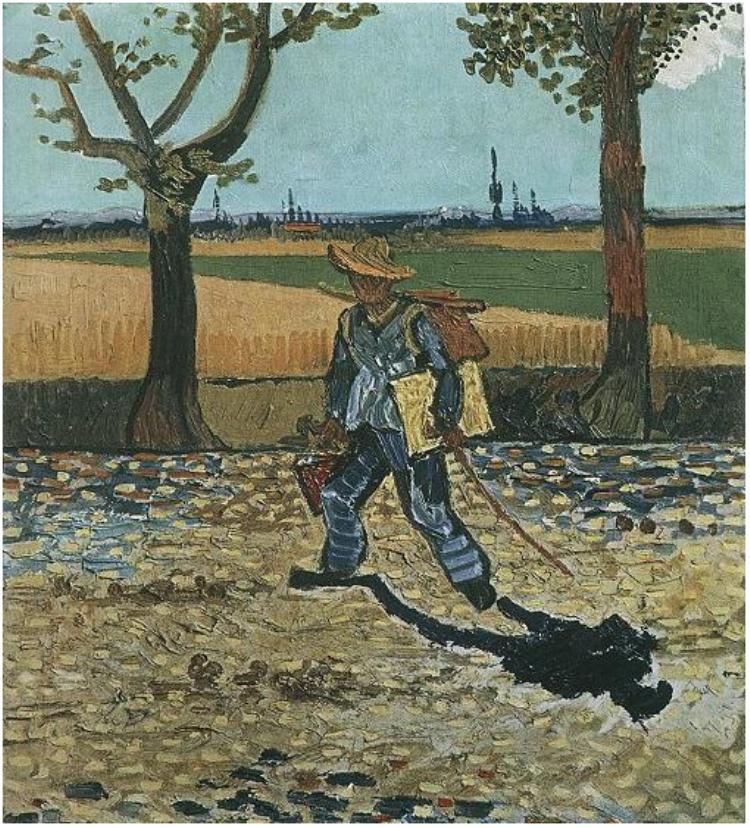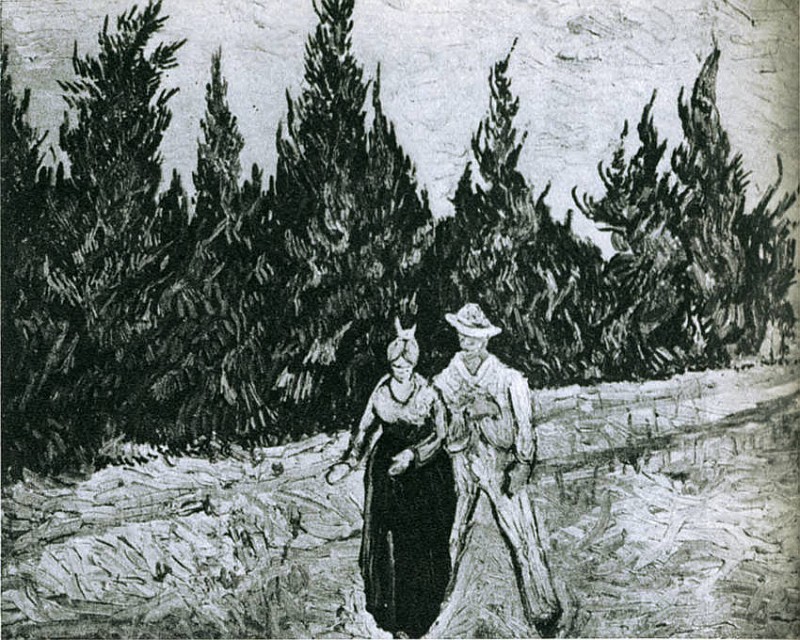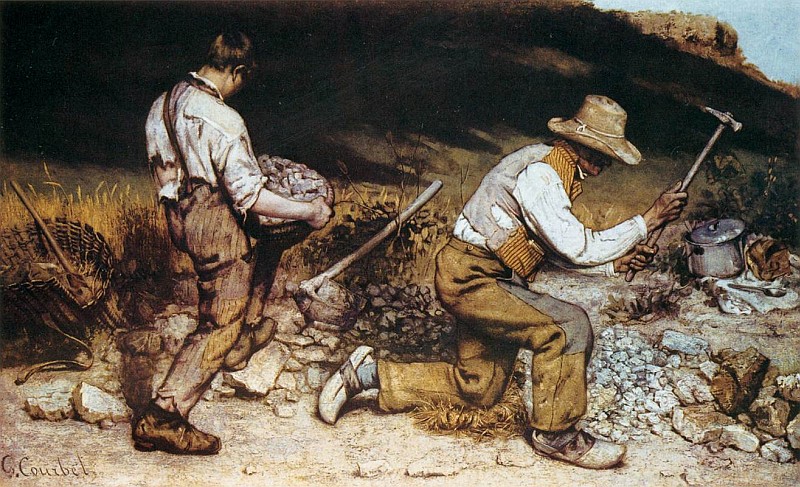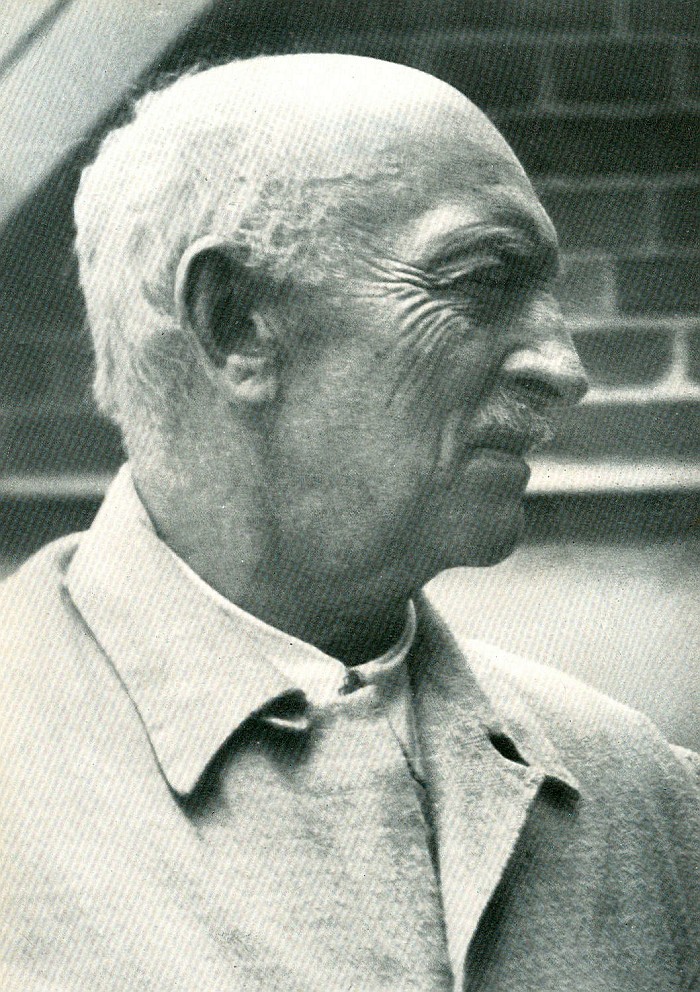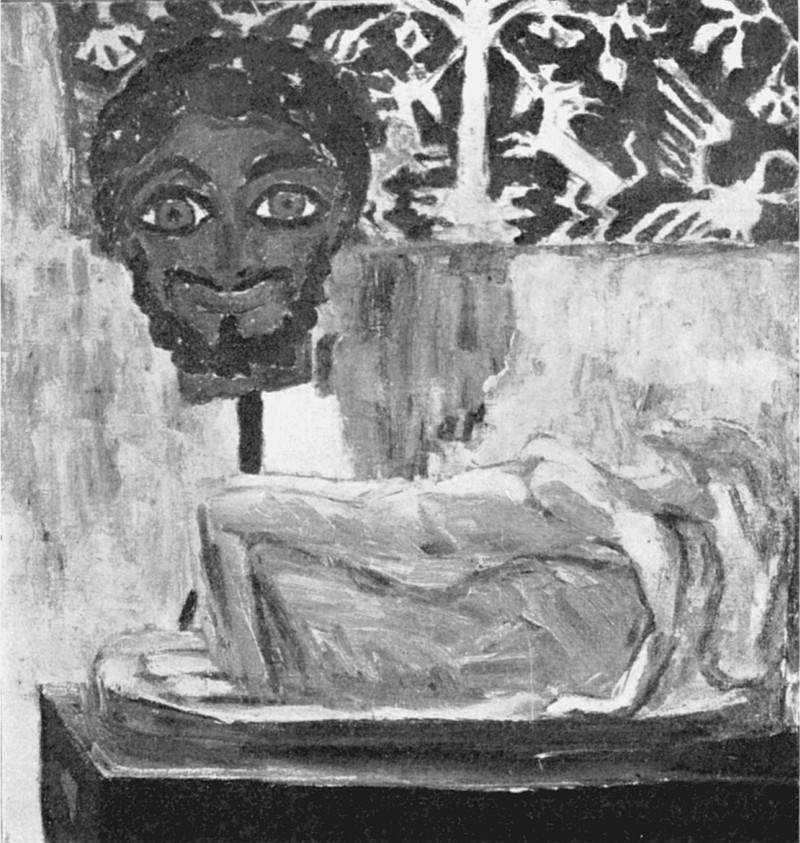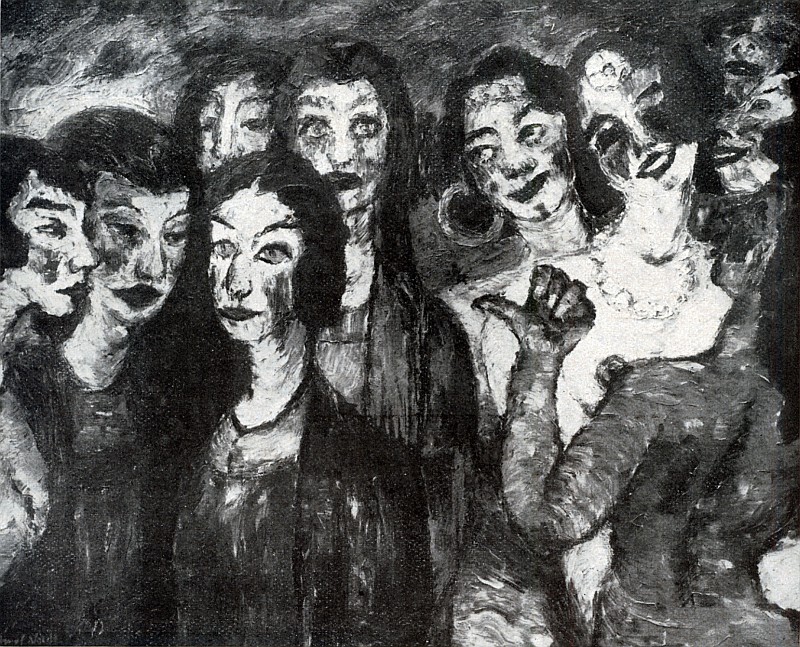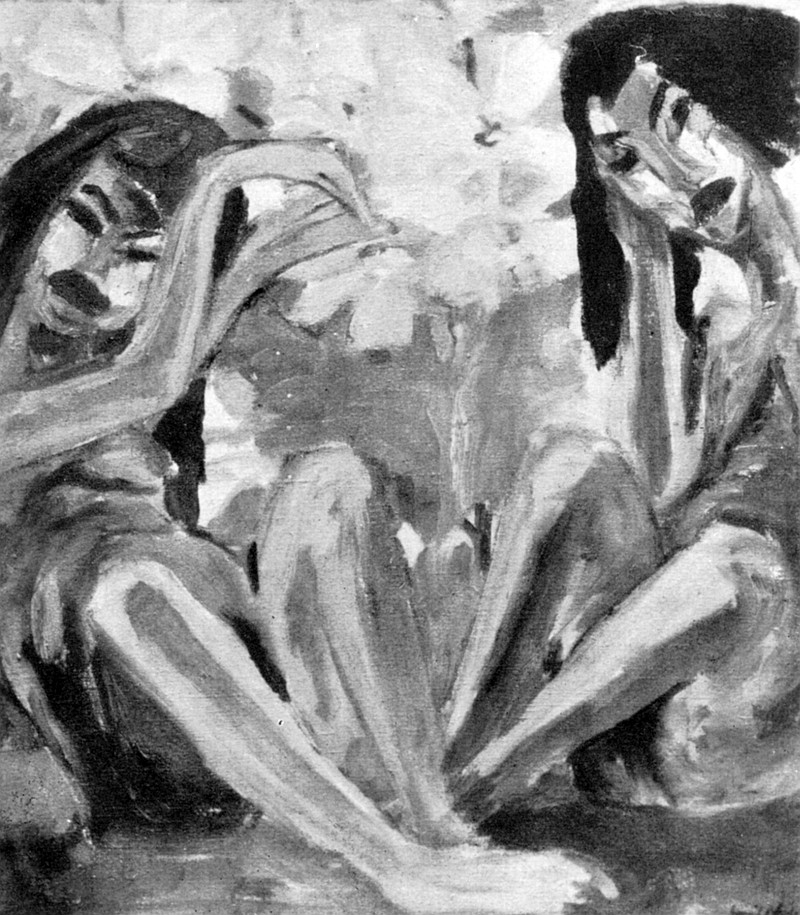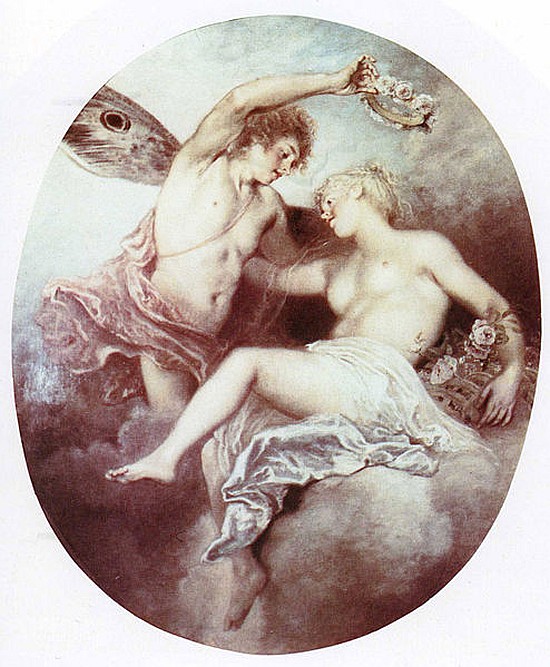Vincent Van Gogh
Según puede leerse en el apartado dedicado a obras perdidas en el sitio web vangoghgallery.com:
"Pasados 120 años desde la muerte de Van Gogh y con alrededor de 2000 trabajos conocidos, es increíble que sólo se registran 6 obras como destruidas. Aunque algunos de sus trabajos tempranos fueron destruidos por el propio artista porque no cumplían con sus expectativas, hoy en día la mayoría de las obras de Van Gogh están cuidadosamente preservadas en museos y colecciones privadas. Los 6 destruidos lo fueron por incendios, varios de los cuales tuvieron lugar durante la Segunda Guerra Mundial." [1]
Texts in english at the end of the post, marked with [*] in each paragraph.
"Naturaleza muerta: Jarrón con cinco girasoles / Still Life: Vase with Five Sunflowers"
Óleo sobre lienzo / oil on canvas, agosto, 1888.
La pintura fue trasladada desde Francia a Japón en el vapor correo Binna. El vapor partió el 21 de mayo de 1920 y llegó a Japón alrededor del 12 de diciembre del mismo año. A principios de 1921 la pintura apareció en la primera de las dos breves exposiciones en las cuales se la vio en Japón. Fue bien recibida por el público japonés, especialmente en la segunda muestra en Osaka, donde atrajo más atención que el resto de las obras exhibidas. Lo más extraño fue que el gran marco de la pintura tuvo un impacto decisivo en su destino. Durante ésta segunda exhibición en el Shinanobashi European Painting Institute, el marco inusualmente pesado hizo que la pintura se cayera de la pared. El marco se dañó, y Yamamoto estaba tan enfadado que ya nunca permitió que volviera a exhibirse.
Texto traducido de aquí. [2]
Imagen de un catálogo donde puede verse a Koyata Yamamoto junto a la obra de Van Gogh
Image from a catalog with Koyata Yamamoto and Van Gogh's painting
Yamamoto estaba preocupado por los duros bombardeos de los últimos años de la Segunda Guerra mundial y pidió a un banco en Osaka que guardara la obra en sus sótanos. El banco lo rechazó ya que la delicada obra podría verse dañada por la humedad. Así que Yamamoto dejó la obra en su sitio habitual, en la pared de la sala de dibujo de su residencia en Uchide, distrito de Ashiya. En 1945 Ashiya fue objetivo de cuatro ataques aéreos del ejército estadounidense. En el último, 5-6 de agosto (al mismo tiempo que el ataque atómico a Hiroshima), murieron 89 personas y 2833 casas fueron parcial o completamente destruídas. La casa de Yamamoto ardió hasta los cimientos y la obra fue destruída. Se especula que el marco de la obra dificultó su traslado, y algunos piensan que fue motivo de la destrucción de la misma. Texto traducido de aquí. [3]
Fotografía / Photograph: Mushakoji Saneatsu Memorial Museum
En una nota del Daily Mail del 7 de Septiembre, podemos leer lo siguiente:
Ahora, 70 años después, un historiador del arte británico ha desenterrado una fotografía a color que muestra la obra en todo su esplendor.
La impresión, con sus vívidos amarillos, naranjas brillantes, verdes cítricos y fondo azul real, nos ofrece una rara visión de cómo puede haberse visto el original.
Martin Bailey se topó con ésta foto mientras investigaba un libro de la serie de los Girasoles. Además de preservar los colores originales, también muestra el inusual y pesado marco de madera especialmente escogido por el artista.
Mientras que la mayoría de los marcos de la época eran blancos, Van Gogh escogió uno naranja haciendo juego con el color de los girasoles. [4]
________________________________________________________
"Carreta con muchacho y mujer de Scheveningen / Donkey Cart with Boy and Scheveningen Woman"
Dibujo a lápiz y pluma / drawing, pen, pencil, La Haya, Sept., 1882
Destruído en un incendio en 1940. Anteriormente había estado en Rotterdam /
Destroyed by fire in 1940 (formerly in Rotterdam)
"Molino en Montmartre / Windmill on Montmartre"
Óleo sobre lienzo / oil on canvas, París, otoño / Autumn, 1886
Destruido en un incendio en 1967 / Destroyed by fire in 1967
"El jardín parroquial en Nuenen con estanque y figuras /
The Parsonage Garden at Nuenen with Pond and Figures"
Óleo sobre panel / oil on panel, Nuenen: Nov., 1885
Destruido por los incendios de Rotterdam durante la Segunda Guerra Mundial /
Destroyed by fire in Rotterdam during the Second World War
"El parque en Arles con la entrada vista a través de los árboles /
The Park at Arles with the Entrance Seen through the Trees"
Óleo sobre lienzo / oil on canvas, Arles: Oct., 1888
Destruido por los incendios de Rotterdam durante la Segunda Guerra Mundial /
Destroyed by fire in Rotterdam during the Second World War
"El pintor camino al trabajo / The Painter on His Way to Work"
Óleo sobre lienzo / oil on canvas, Arles, Jul., 1888
Destruído por el fuego durante la Segunda Guerra Mundial. Anteriormente en el Museo Kaiser-Friedrich, Magdeburg (Alemania)
Destroyed by fire in the Second World War; formerly in the Kaiser-Friedrich-Museum, Magdeburg (Germany)
Por último, ésta obra de la que nada se sabe desde antes de la Segunda Guerra.
Finally, this work of which nothing is known since before WWII.
"Los amantes: El jardín del poeta IV / The Lovers: The Poet's Garden IV"
Óleo sobre lienzo / oil on canvas, 75 x 92 cm., Arles, Oct., 1888
La obra fue confiscada por los nazis en 1937 considerada como "arte degenerado". No está claro si fue destruída.
Confiscated in 1937 by the Nazis as degenerate. It is not certain that this painting has been destroyed.
Más sobre Van Gogh en "El Hurgador" / More about Van Gogh in this blog:
[La Colección Bentaberry (I)], [Arte & Humor (III)]
Gustave Courbet
"Les Casseurs de pierres / Los picapedreros / The Stonebreakers"
Óleo sobre lienzo / oil on canvas, 165 x 257 cm., 1849.
Ésta obra de Courbet fue destruida durante los bombardeos de Dresde en febrero de 1945, junto con otras 154 pinturas, cuando el vehículo que las transportaba al castillo de Kónigstein fue alcanzado por las bombas aliadas. Se exhibió por primera vez en el Salón de París en 1850.
Información de Wiki. [5]
Información de Wiki. [5]
__________________________________
Encontré un interesante análisis de ésta obra en el cual podemos leer que la pintura representa:
"...una descripción precisa de los abusos y privaciones que eran una característica común de la vida rural francesa de mediados de siglo. Y como en otras grandes obras de arte, hay una asociación precisa entre la narrativa (la historia) y las elecciones formales que hizo el pintor; elementos como la pincelada, composición, línea y color.
Los dos picapedreros en la obra de Courbet están situados frente a una pequeña colina del tipo que eran comunes en el pueblo francés de Ornan, donde el artista se crió y pasó mucho tiempo. La colina alcanza el borde superior del lienzo en toda su extensión, salvo en la esquina superior derecha, donde aparece un pequeño trozo de cielo azul brillante. El efecto pretende aislar a los trabajadores, y sugerir que están física y socioeconómicamente atrapados por su trabajo.
Como las piedras mismas, la pincelada de Courbet es áspera, más de lo que podría esperarse a mediados del s.XIX. Ésto sugiere que la manera como el artista pintó el lienzo fue en parte un rechazo consciente al fino acabado y refinamiento del estilo Neoclasicista que aún dominaba Francia en 1848.
Quizá lo más característico del estilo de Courbet es su rechazo a centrarse en las partes de la imagen que normalmente reciben la mayor atención. Tradicionalmente, un artista podría detenerse en las manos, los rostros y primeros planos. Courbet no. Si se observa con cuidado, se nota que pretende ser imparcial, otorgando la misma atención a las manos que a las rocas." [6]
Texto traducido del que puede leerse completo (en inglés) aquí.
Más sobre Courbet en "El Hurgador" / More about Courbet in this blog:
Emil Nolde
Emil Nolde fue uno de los más destacados pintores expresionistas alemanes. Nacido en 1867, su verdadero nombre era Emil Hansen. Estuvo muy influido por Vincent van Gogh, Edvard Munch y James Ensor.
Perteneció al conocido movimiento "El Puente" (Die Brücke). Su crispado manejo del pincel, la utilización de colores vivos y estridentes y las figuras de rostros a modo de máscaras pretendían provocar en el espectador un shock visual y emocional.
El viaje que realizó a Nueva Guinea entre 1913 y 1914 hizo que cristalizara en él un gusto por el arte tribal, que incluía tremendas distorsiones de las formas, modelos planos y violentos contrastes de color.
En 1941 los nazis le prohibieron pintar. Durante ese tiempo pintó acuarelas que llamó ¨Pinturas no pintadas". [7]
Información biográfica de Wiki.
____________________________________________
En 1945, el personal de cocina del Hospital de Teupitz quemó varias obras de Nolde por orden de las tropas rusas. Éstas son algunas:
In 1945 the kitchen staff at the asylum in Teupitz burned several Nolde's works on the orders of Russian troops. These are some of it:
"Naturaleza muerta (tejido, cabeza y escultura) / Still Life (Woven Material, Head, and Sculpture)"
Óleo sobre lienzo / oil on canvas, 76,5 x 71 cm., 1913.
"El Pacha / The Pascha", óleo sobre lienzo / oil on canvas, 100 x 86 cm., 1912.
"La vírgenes sabias y absurdas / The Wise and Foolish Virgins"
Óleo sobre lienzo / oil on canvas, 86 x 106 cm., 1910.
____________________________________________________"Desnudos amarillos / Yellow Nudes", óleo sobre lienzo / oil on canvas, 100 x 86 cm., 1912.
Destruído cuando la casa de Selma von der Heydt fue bombardeada durante la Segunda Guerra Mundial.
Destroyed when the the Selma von der Heydt house was bombed during World War II.
"Masculino y femenino / Male and Female", óleo sobre lienzo / oil on canvas, 73 x 88 cm., 1912
Ésta obra fue legada al Museo Folkwang de Essen, y confiscada por los nazis en 1937 como degenerada. Se exhibió en la Entartete Kunst (exposición de arte degenerado), celebrada en Munich en 1937, y pasó a manos de Hildebrand Gurlitt en 1941. Su destrucción no está documentada, pero permanece en paradero desconcido desde entonces. [8]
Antoine Watteau
Jean-Antoine Watteau (Valenciennes; 10 de octubre de 1684 - Nogent-sur-Marne; 18 de julio de 1721) fue un pintor francés, uno de los grandes genios del último barroco francés y del primer rococó. Se le atribuye la creación del género de las fêtes galantes: escenas de cortejo amoroso y diversiones, con un encanto idílico y bucólico, bañadas en un aire de teatralidad. Algunos de sus temas más conocidos se inspiraron en el mundo de la comedia italiana o el ballet. Información de Wiki. [9]
Alrededor de 1716 pintó una serie de imágenes representando las estaciones para Pierre Crozatl. De ellas hoy sólo queda una, "Verano". "Primavera" fue redescubierta en 1964... y destruída por el fuego tan sólo dos años después. [10]
"Primavera / Spring", óleo sobre lienzo / oil on canvas, 119 × 98 cm., c.1716
No menos extraña es la suerte que se presume corrió la obra "Les deux hommes / Dos hombres", un dibujo al carboncillo de Watteau. Stéphane Breitwieser pasó siete años de su vida robando obras de arte de 172 museos en 5 países europeos. Casi todo lo que robó fue destruido por su madre que montó en cólera (o simplemente intentó destruir pruebas) al enterarse de que su hijo había sido detenido en 2002 en Suiza. Entre lo destruido se cuentan más de 60 obras de maestros tales como Boucher, Cranach, Watteau y Breughel, que fue recortando y tirando.
La noticia puede leerse completa (en inglés) aquí. Más información en Wiki.
No me fue posible encontrar una imagen de la obra perdida, pero podría ser similar a ésta:
I was unable to find a picture of the lost work, but could be similar to this:
"Dos hombres de pie / Two Men Standing", sanguina sobre papel / red chalk on laid paper
17,7 x 18,9 cm., c. 1717. National Gallery of Canada.
Fuentes de las imágenes / Images sources:
Van Gogh: vangoghgallery.com
Courbet & Nolde: Sterling and Francine Clark Art Institute Library, The Clark’s digital collections.
Watteau: Imágenes de aquí y aquí.
Watteau: Imágenes de aquí y aquí.
English translations
[1]
As we can read in the section about lost arworks, in the vangoghgallery.com website:
"In over 120 years since Van Gogh’s death and among his over 2,000 known works, it is incredible that only six works have been recorded as destroyed. Although some of his earliest works were destroyed by the artist himself because they did not meet with his expectations, today the majority of Van Gogh’s works are carefully preserved in museums and private collections. All of the six of the destroyed works were destroyed in fires many of which took place during World War II."
[2]
The sunflower painting was shipped from France to Japan on the mail steamer Binna. The steamer departed on 21 May 1920 and arrived in Japan later that year sometime around 12 December. Early in 1921 the painting appeared in the first of only two brief exhibitions in which it would be displayed in Japan. The painting was well received by the Japanese public, especially at the second exhibition in Osaka where it attracted more attention than the many other works on display. Strangely enough, it was the painting's large frame that had a profound impact on its fate. During the Shinanobashi exhibition the unusually heavy frame caused the painting to fall from the wall. The frame was damaged and Yamamoto was so outraged that he never allowed it to be exhibited again. Sadly, the same frame may have had a role to play in the painting's tragic fate. Text from here.
[3]
Yamamoto was worried about the heavy bombing in the last years of World War II and asked a bank in Osaka to store the Van Gogh sunflowers painting in its basement. The bank refused on the grounds that the delicate work would be damaged by the basement's humidity. So Yamamoto kept the painting in its usual place on the drawing-room wall of his residence in the Uchide district of Ashiya. In 1945 Ashiya was subject to four air raids by the American military: on 11 May, 5 June, 15 June and finally on 5-6 August. In this final air raid (occurring at the same time as the atomic bombing in Hiroshima), 89 people were killed and 2,833 homes were completely or partly destroyed. Yamamoto's house burned to the ground and Van Gogh's Still Life: Vase with Five Sunflowers was destroyed. There is speculation that the painting's heavy frame may have made it too difficult to move and some believe that this was instrumental in the work's destruction. Text from here.
[4]
In an article published in the Daily Mail on Sept. 7th, 2013 we can read:
Now, almost 70 years later, a British art historian has unearthed a colour photograph which reveals the work in all its glory.
Self portrait of Vincent van Gogh, 1887.
Tortured: A self-portrait of Van Gogh
The print — with its vivid yellows, glowing oranges, citrus greens and royal blue background — gives us a rare glimpse of what the original might have looked like.
Art historian Martin Bailey stumbled on the photo while researching a book on the Sunflower series. As well as preserving Van Gogh’s original bold colours, it also shows the unusual, heavy, timber frame that was specially chosen by the artist.
While most picture frames at the time were white, Van Gogh chose an orange one to play against the orange of the sunflowers.
[5]
This Courbet's work was destroyed in the Bombing of Dresden along with 154 other pictures, when a transport vehicle moving the pictures to the castle of Königstein, near Dresden, was bombed by Allied forces in February 1945. The painting was first exhibited at the Paris Salon of 1850. Info from Wiki.
[6]
I found an interesting analysis of this arwork in which we can read that the painting represents:
"...an accurate account of the abuse and deprivation that was a common feature of mid-century French rural life. And as with so many great works of art, there is a close affiliation between the narrative (story)and the formal choices made by the painter, meaning elements such as brushwork, composition, line, and color.
The two stone breakers in Courbet's painting are set against a low hill of the sort common in the rural French town of Ornan, where the artist had been raised and continued to spend a much of his time. The hill reaches to the top of the canvas everywhere but the upper right corner, where a tiny patch of bright blue sky appears. The effect is to isolate these laborers, and to suggest that they are physically and socio-economically trapped by their work.
Like the stones themselves, Courbet's brushwork is rough—more so than might be expected during the mid-nineteenth century. This suggests that the way the artist painted his canvas was in part a conscious rejection of the highly polished, refined Neoclassicist style that still dominatedFrench art in 1848.
Perhaps most characteristic of Courbet's style is his refusal to focus on the parts of the image that would usually receive the most attention. Traditionally, an artist would spent the most time on the hands, faces, and foregrounds. Not Courbet. If you look carefully, you will notice that he attempts to be even-handed, attending to faces and rock equally." Full text here.
[7]
Emil Nolde was one of the most prominent German Expressionist painters. Born in 1867, his real name was Emil Hansen. He was very influenced by Vincent van Gogh, Edvard Munch and James Ensor.
Belonged to the Movement known as "The Bridge" (Die Brücke). His contorted brushwork, the use of bright and garish colors and faces like masks way intended to provoke in the viewer a visual and emotional shock.
The trip he took to New Guinea between 1913 and 1914 made it crystallized in him a love of tribal art, which included tremendous distortions of form, flat models and violent contrasts of color.
In 1941 the Nazis banned him paint. During that time he painted watercolors called "Unpainted Paintings".
Info from Wiki:
[8]
This work was bequeathed to the Museum Folkwang Essen, and confiscated by Nazis in 1937 as degenerate. It was exhibited in the Entartete Kunst exhibition of degenerate art held in Munich in 1937, and passed on commission to Gurlitt in 1941. The destruction of this work has not been documented. It's location has been unknown since then.
[9]
Jean-Antoine Watteau (October 10, 1684 - July 18, 1721) was a French painter whose brief career spurred the revival of interest in colour and movement (in the tradition of Correggio and Rubens). He revitalized the waning Baroque style, and indeed moved it to the less severe, more naturalistic, less formally classical Rococo.
Watteau is credited with inventing the genre of fêtes galantes: scenes of bucolic and idyllic charm, suffused with an air of theatricality. Some of his best known subjects were drawn from the world of Italian comedy and ballet. Info from Wiki.
[10]
Around 1716 he painted a series of pictures depicting the seasons for Pierre Crozatl. Of these only one remains today, "Summer". "Spring" was rediscovered in 1964 ... and destroyed by fire just two years later.
[11]
No less strange is the presumed fate of the work "Les deux hommes / Two men", a chalk drawing by Watteau. Stéphane Breitwieser spent seven years of his life stealing 172 artworks from museums in 5 European countries. Almost everything he stole was destroyed by his mother who was furious -or simply destroy evidence- when his was arrested in 2002 in Switzerland. Among the destroyed are more than 60 works by masters such as Boucher, Cranach, Breughel and Watteau; the mother was cutting and throwing away the paintings.
